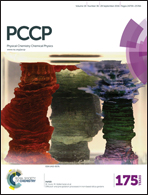Fluorinated photopolymer waveguide thermo-optic switches with loss-compensation function based on erbium-containing cladding structure
Abstract
In this work, a novel polymer thermo-optic switch with loss compensation function is successfully designed and fabricated by direct UV-writing technology. The waveguide core and cladding layer material of the switch are based on the low-loss fluorinated photopolymer and erbium-containing gain copolymer. The absorption loss characteristics and thermal stabilities of the core and cladding materials are studied. The optimal optical field distribution for loss-compensation structures is analyzed by modifying refractive index difference between the core and cladding. The thermo-optic modulation effect of the optical signal transmission for the device is simulated. The insertion loss of the switch device is about 6 dB. The switching rise and fall time are 396.2 μs and 461.2 μs applied by 500 Hz square-wave voltage, respectively. The switching power is 6.5 mW, the extinction ratio of the switch is about 14 dB. The loss-compensation value of the entire chip is obtained as 1.9 dB at 1530 nm wavelength. The flexible loss-compensation multi-functional waveguide switch is appropriate for incorporation in large-scale opti-electronic integrated circuits.


 Please wait while we load your content...
Please wait while we load your content...